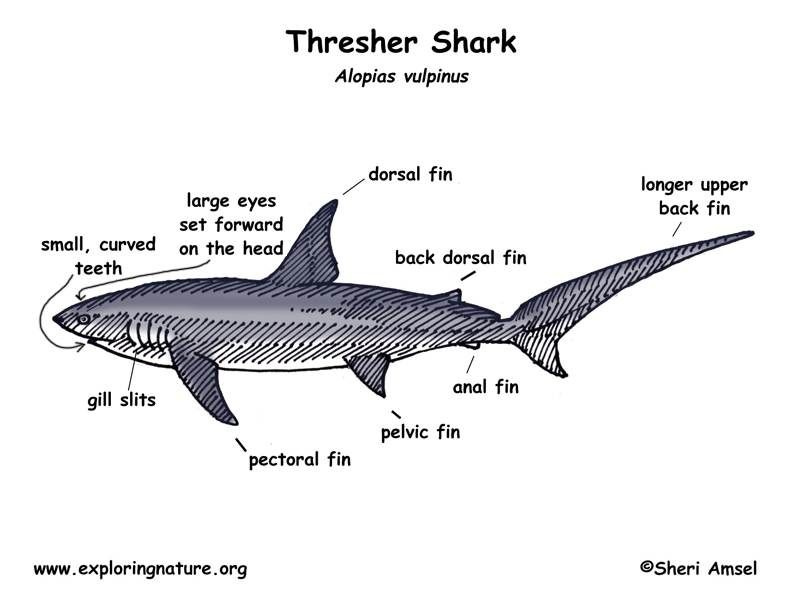

They are found in warm and temperate oceans throughout the world.
They are found most often on the surface of coastal waters, but they can be found at more than 1,000 feet.
They have a much large upper tail (caudal) fin – up to half its length. They have a short snout and large eyes close to the front of their head. They are dark on top and lighter underneath. They can reach 20 feet long.
They are strong swimmers and can leap clear of the water. They use their large back fin to herd fish together for feeding.
They eat fish and squid.
This shark is ovoviviparous, with the eggs being hatched inside the female, and 2 to 6 live pups being delivered at a size of 1.5 meters (5 feet) long. During development, the young may cannibalize their siblings within the uterine chamber.
Kingdom: Animalia
Phylum: Chordata
Class: Chondrichthyes
Order: Lamniformes
Family: Alopiidae
Genus: Alopias
Species: A. vulpinus
When you research information you must cite the reference. Citing for websites is different from citing from books, magazines and periodicals. The style of citing shown here is from the MLA Style Citations (Modern Language Association).
When citing a WEBSITE the general format is as follows.
Author Last Name, First Name(s). "Title: Subtitle of Part of Web Page, if appropriate." Title: Subtitle: Section of Page if appropriate. Sponsoring/Publishing Agency, If Given. Additional significant descriptive information. Date of Electronic Publication or other Date, such as Last Updated. Day Month Year of access < URL >.
Amsel, Sheri. "Shark (Thresher)" Exploring Nature Educational Resource ©2005-2024. December 14, 2024
< http://www.exploringnature.org/db/view/Shark-Thresher >

